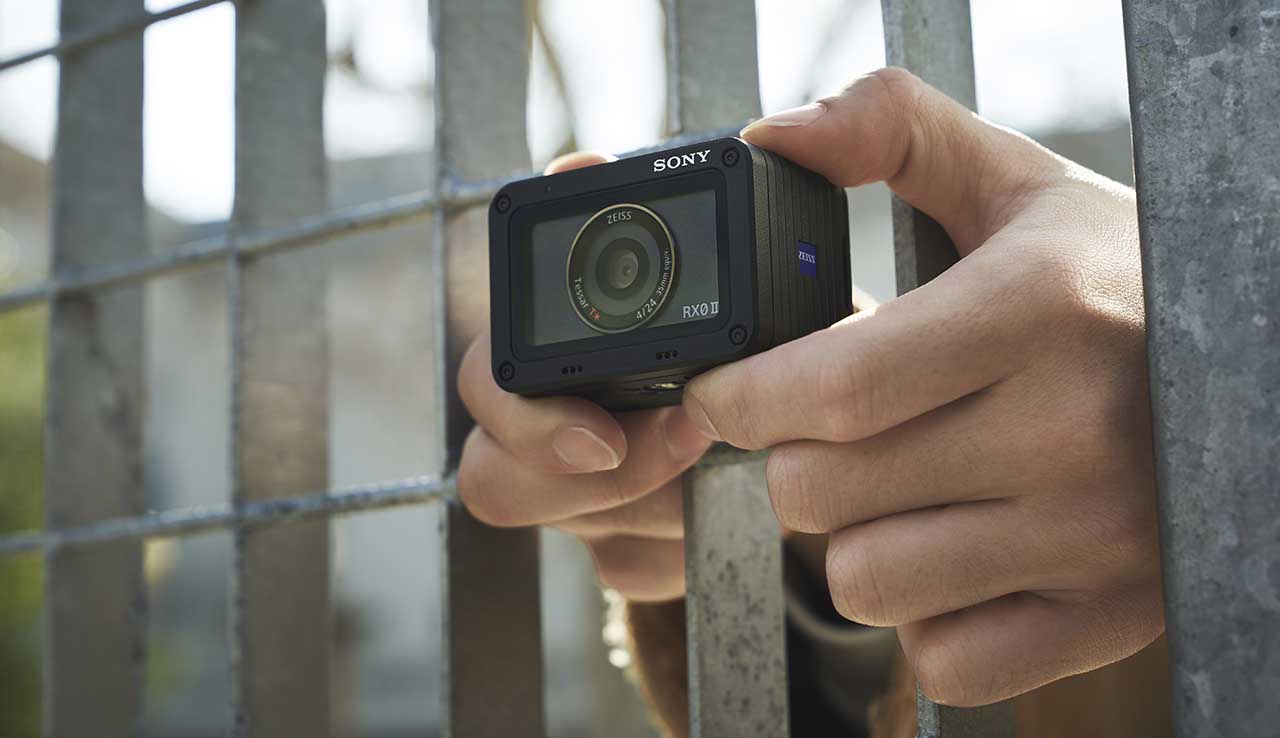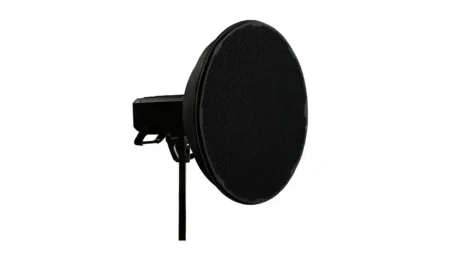What are the best action cameras for shooting video? In this buyer’s guide Steve Fairclough reveals the advantages of picking an action camera to shoot video with and outlines the best current action cameras for capturing fast-paced action…
What you’ll learn
- The history of action cameras
- What action cameras offer for video shoots
- The main features of current action cameras
- Key things to consider before buying a camera
- Our ‘top five’ best action cameras for video shooting
A short history of action cameras
The past decade has seen an explosion in the options for shooting creative videos. This period has seen the emergence of DSLRs and mirrorless cameras that can shoot in tight spaces, drones that can capture stunning video from the skies and uber-small action cameras that can record thrilling 4K video footage.
In this buyer’s guide we take a closer look at the emergence of action cameras as another fresh and potent tool in the kit bag of filmmakers. The driving force behind action cameras has been the company GoPro who, as Woodman Labs, launched a $20 US model in 2004. The Hero 35mm 0001 was an analogue model that came with a 35mm Kodak film, a waterproof case, a wrist strap and no video capabilities.
In 2006 GoPro went digital and launched the GoPro Hero Digital model that could record VGA videos in 10-second sequences, but with no sound. The following years saw the Hero 2 and Hero 3 models coming out and through continued innovation today’s action cameras feature specs such as LCD touchscreens, 4K shooting capabilities, WiFi, editing software and companion apps.
GoPro remains one of the leaders in the action cam marketplace but many others have emerged, including the likes of Sony, Xiaomi, SJCAM, Yi, Olympus, Olfi and others. To help you decide if you need to dip your toe into the action pool let’s take a look at what such cameras offer…
Why use an action camera for video?
The obvious advantage that action cameras offer filmmakers is the ability to get close to fast action. Their ultra-small bodies allow them to be bolted on/attached to bikes, skateboards, skis, helmets, cars and surfboards or they can even be hand-held whilst you’re taking part in extreme action sports.
Despite their smaller form factor some action cameras are able to incorporate either full-frame, or crop factor, sensors that are the same size as those seen in much larger cameras. This means many of them are capable of capturing quality 4K video at up to 60 frames per second (fps) whilst often offering even higher frame rates for capturing Full HD 1080 video and 720 video footage.
The advantage of having higher frame rates is that you will be guaranteed to catch the action smoothly and it will give you greater flexibility when it comes to editing the footage. For example, you may want to slow down or speed up some footage for creative reasons and the faster frame rates will allow you to ‘play’ with footage in the edit suite.
When you’re talking about footage action cameras will offer you the ability to capture dynamic, point-of-view footage. For example, an action camera attached to the helmet of a downhill skier or a motorbike racer will produce some dramatic and unique footage.
Given their small sizes action cameras have, by necessity, to be fairly easy-to-use. There simply isn’t the overall body area to accommodate a wide variety of knobs and buttons, so simplicity of design and operation is key. Often you’ll have just a couple of buttons to push to access and navigate the main menu of an action camera.
That being said the latest higher-end models on the market do now offer features such as touchscreen control, WiFi transfer of video footage, built-in image stabilisation systems and GPS tracking systems but, of course, be prepared to spend a bit more to secure high-end features.
There aren’t too many down sides to shooting with action cameras as they are really tools that will allow you to do a certain job. It’s more a case of deciding what you need for your shoots and which camera is best suited to helping you to achieve that.
What video features to look for in an action camera
When you’re considering buying any action camera for shooting video remember to think about ease-of-use, the variety of frame rates, video resolutions, output options (such as HDMI), what memory card slots are available and if you need features like WiFi file transfer or GPS. For more tips and advice on the key factors to bear in mind when you’re buying a camera to shoot video with, check out our guide to the best cameras for video.
This blog outlines some of the ‘best’ current action cameras on the market in terms of quality of video specs, ease-of-use and what they can potentially add to your video shoots. Of course, there are many other action cams available besides those outlined here, so do your research and check if your exact needs match our recommendations. See below for our picks for the best action cameras for video recording.
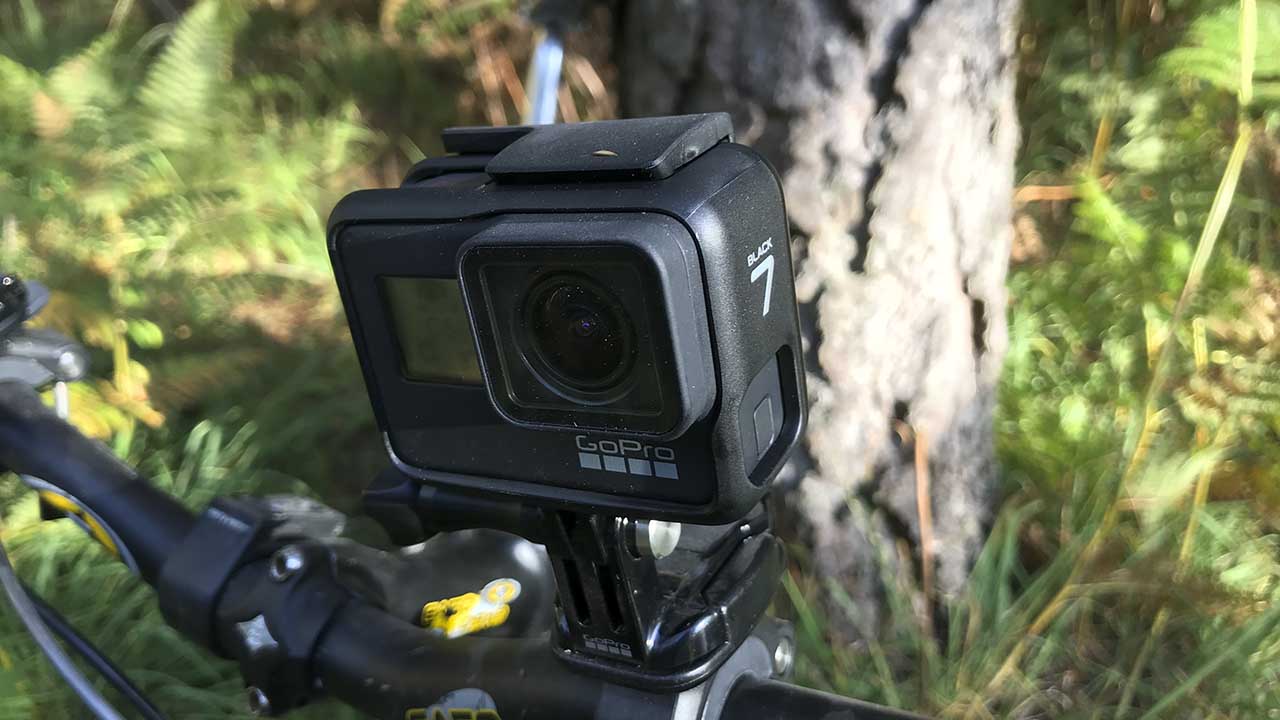
GoPro Hero 7 Black
The latest in a long line of GoPro ‘Heroes’ is significant in that it the company’s first model to incorporate its HyperSmooth image stabilisation technology. Another new feature is known as ‘TimeWarp’ video, which essentially combines the idea of conventional frame-by-frame timelapse shooting with the stabilised HyperSmooth feature.
The 4K video capabilities stretch up to 60 frames per second, whilst both 1080 and 720 video can be captured at an impressive 240fps. Weighing in at just 118 grammes the camera is waterproof down to a depth of 10 metres.
With a battery life of up to three hours, and the ability to capture smooth 4K footage, the Hero 7 Black is arguably THE best action cam currently on the market.
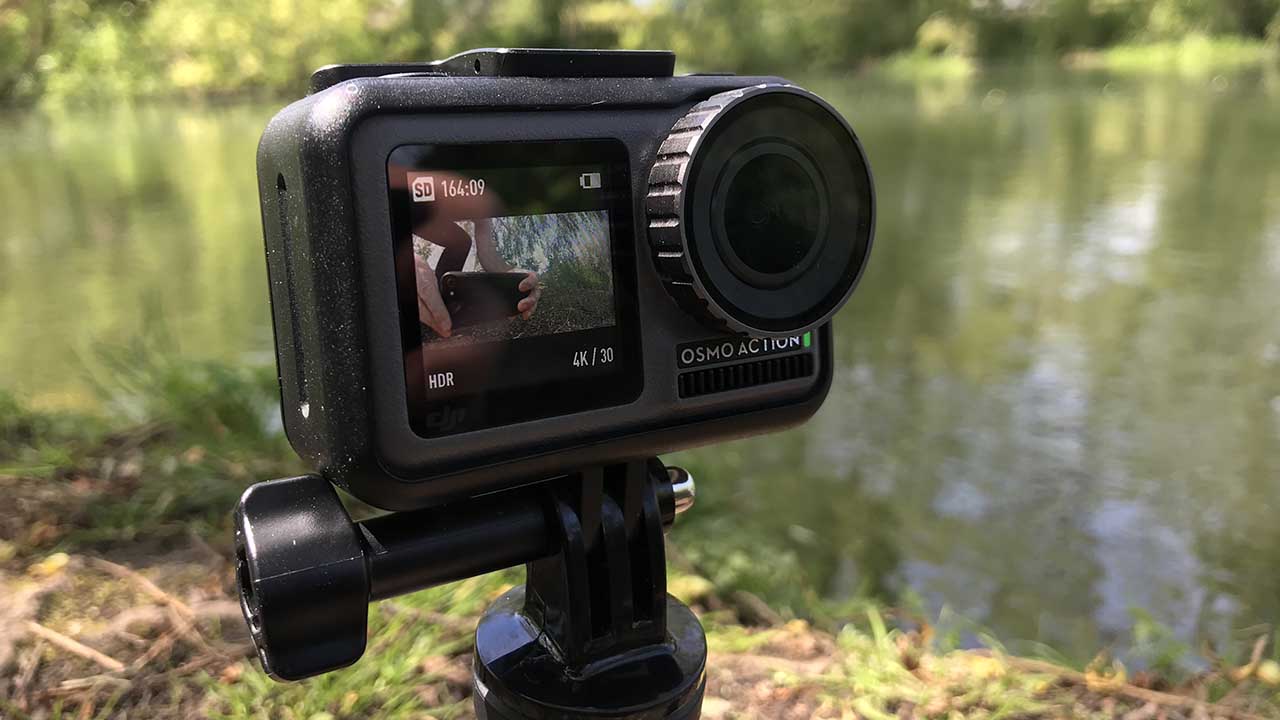
DJI Osmo Action
4K video capability is a must have, but the majority of cameras stumble before they’ve even left the starting blocks. Here the Osmo Action goes level with GoPro Hero 7 Black and manages 60fps.
As the resolution drops the framerates escalate: at 1080p you have 240fps, which is ideal for slow-motion footage. It’s also got RockSteady, which is DJI’s version of GoPro’s HyperSmooth built-in stabilisation, and it’s equally impressive.
In our tests the DJI Osmo Action was able to keep up with the move from light to shade without issue, and the dynamic range of the camera was impressive. There was a level of burn out in the footage when riding in the forest, as the camera tended towards overexposure.
Dialling in a little exposure compensation helped to pull back a little sky detail and recover highlights that would have otherwise been burnt out.
When presenting to camera, it was essential that spot metering was selected otherwise skin tones would also become burnt out, but with a little adjustment, the results were impressive.
At 4K video quality is excellent with clear, crisp detail and plenty of tone and colour. Drop the framerate to 30fps, and it’s hard to tell any difference between 60fps and 30fps which mean that the Osmo Action is the only other camera aside from the GoPro to offer 4K true action footage.
At 1080p and up to 60fps the footage captured is again bright and crisp and some of the best produced by an action camera.
Increase the framerate to 240fps for some slow-motion capture, and you can’t fail to be impressed, this is by far some of the best footage that I’ve seen at this framerate. It’s startlingly good and better than the vast majority of other action cameras at 30 or 60fps.
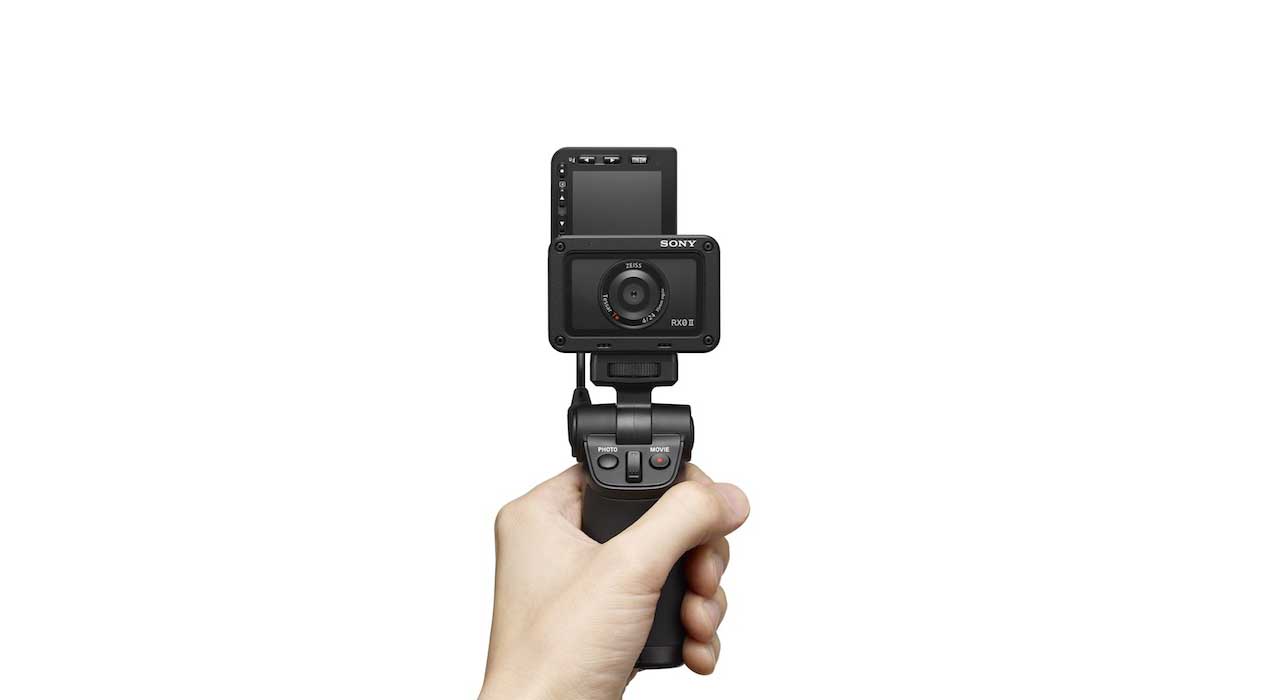
Sony RXO II
This mini marvel – billed as ’the world’s smallest 4K video cam’ – can pretty much fit into the palm of your hand and weighs just 132g. Despite its diminutive size it manages to incorporate a 1-inch sensor with 4K video shooting at up to 30fps, Full HD 1080 video at up to 120fps and 720 video at up to 960fps.
As well as a great sensor the camera boasts a 24mm f/4 Zeiss Tessar T* prime wide-angle lens and a tiltable rear LCD screen. The camera is said to be ‘crushproof’ and is also waterproof down to 1 metre and has a rugged outer body. The downsides are that it can prove to be a tad tricky to handle and you won’t get much change out of £500 if you buy this model. However if you’re after a rugged 4K camera with a great lens, it’s worth a look.

Olfi One.Five Black
The very epitome of a super small action camera the Olfi model comes in at a mere 60g in weight. Its video resolutions include 4K shooting at up to 30fps, 1080 at up to 120fps and 720 at up to 240fps.
Its specs include voice activation, GPS and the ability to link to external sensors. Key operation is done via an easy-to-navigate menu screen that you can scroll through via arrow buttons on the side of the camera.
Olfi says the camera can around 90 minutes of video and the unit includes a microSD card slot, a microUSB input and an HDMI output. Other features include the inclusion of the GoPro mounting system and the choice between an underwater casing that will allow you to shoot down to 30 metres and a slim cage. At under £150 this is great value for money.
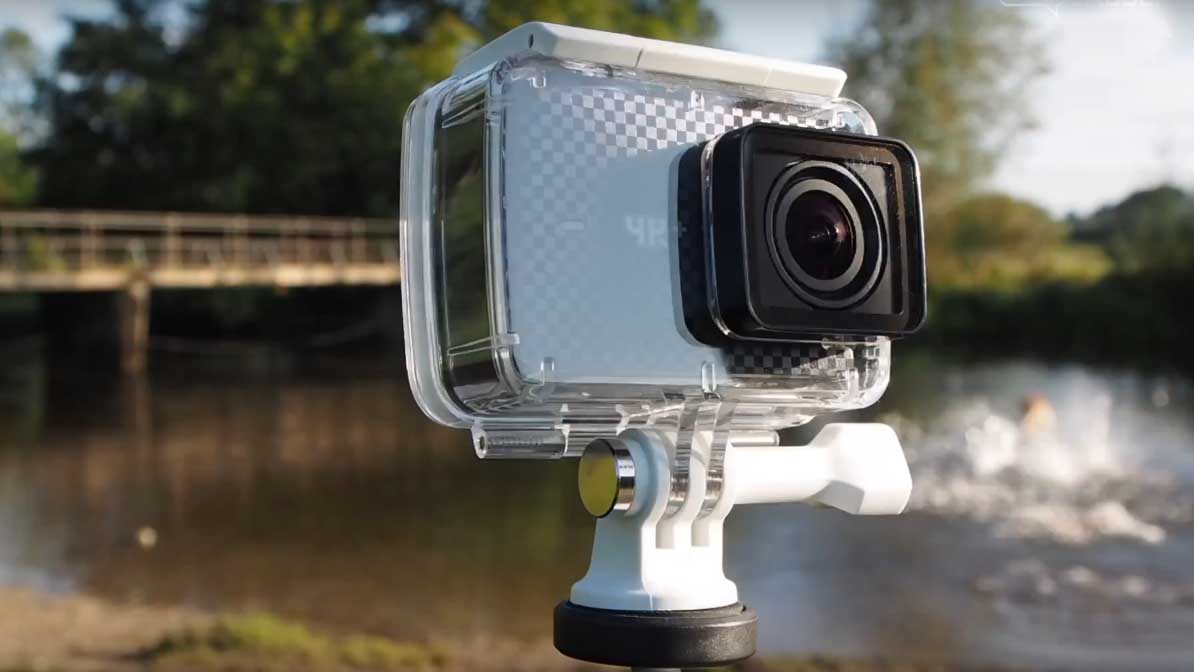
Yi 4K+ Action Camera
Barely bothering the scales at just 93g this little gem is capable of shooting 4K video at up to 60fps, 1080 video at up to 120fps and 720 video at up to 240fps. Whilst it isn’t waterproof, just splashproof, you can invest in an additional waterproof case.
This little model also features a comparatively large 2.19iinch colour touchscreen, for easy operation, and whilst it has an electronic image stabilisation system this only operates at up to 30fps for 4K shooting.
Interestingly, it also has a voice-activation system and you can operate the camera by WiFi via an app on your smartphone. Battery life can stretch to up to around two hours when shooting Full HD 1080p footage and overall this is a great little camera, albeit it with a few foibles.
![]()
Olympus TG-Tracker
Looking like some sort of futuristic submarine this Olympus model has an eye-catching 204-degree lens at the front and can ‘dive’ down to work 30 metres below the surface! The video resolution capabilities include 4K at up to 30fps, 1080 at up to 60fps and 720 at up to 240fps.
Above the lens is a built-in LED light for night-time shooting and it features an array of sensors, including GPS, compass and acceleration sensors – add to that a thermometer and a barometer and you’re certainly not short of shooting data.
The camera also features a built-in stabilisation system and is said to be capable of operating at down to -10 degrees C, making it an all-weather wonder. It also has a flip out 3.8-inch screen and built-in WiFi. Overall, it’s an attractive and rugged option.
Time for action – the options
We’ve just touched the tip of the action camera market here, so feel free to do your own in-depth research before buying. As with any camera it’s always best to actually see it in the flesh and handle it before you buy it. It might be something as simple as how the buttons work on one model versus another that helps you to decide which one to go for.
Also, as with any other video shoot, before you press the ‘record’ button work out exactly what sort of action you want to capture and how that might fit in to the video you’re planning to shoot. You may not need to shoot in 4K or you may not want to spend much more than £100 to get exactly what you want for your shooting needs. Whatever you choose, like all video shooting, working with action cameras should be a creative challenge but, most of all, great fun!
